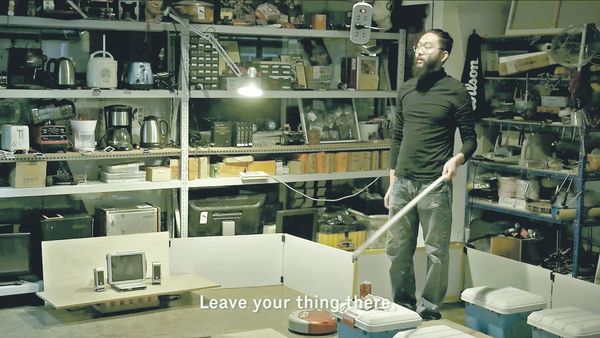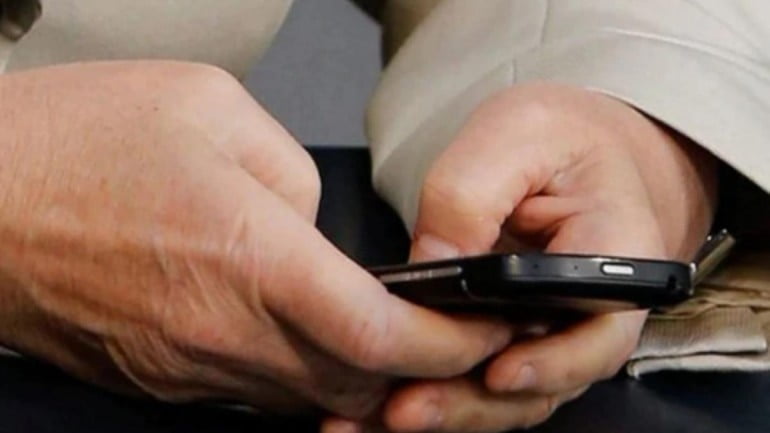

Some of the talks at the festival will look beyond data visualization and use of AI. One such session will be with Devika Krishnan, who will explore the cross-section between eco-consciousness, design and community empowerment. She is at present associated with Dastkar Ranthambore, which trains forest-dwelling communities in new crafts. “These communities didn’t have a craft of their own. But once they got displaced from the forest, they needed to be empowered with a skill, and craft seemed to be a perfect match,” says Jay Dutta, founder and curator, DesignUp. Today, the community is creating patterns of local flora and fauna, using the traditional techniques of block printing practised across Rajasthan.

In 2015, Shanghai-based Simone Rebaudengo made a short “design fiction piece”, titled Teacher Of Algorithms. Commissioned by the academic research group Thing Tank, the film imagined smart objects as unfinished entities—ones that could evolve by observing, reading and interpreting our habits. “What if things are not that good at learning after all without some help? What if in a near future I could get a person to train my products better, as I do with pets? So, what if there would be an algorithm trainer or teacher?” asks Rebaudengo in the film. As a partner at Automato.farm, a design collective focused on the implications of automation and machine intelligence on the everyday, Rebaudengo focuses on such speculative projects.
He builds experiential versions of the future and explores the implications of interacting with smart and autonomous things.

And now Rebaudengo will be sharing some of his ideas at the forthcoming DesignUp festival in Bengaluru (12-16 November). The event hopes to look at unique intersections between technology and design, and how these are influencing the way we interact with the world. “In tech-led businesses, experience design is a critical differentiator. Design is what makes tech edible and appetizing, makes products and services useful and usable,” says Jay Dutta, founder and curator, DesignUp. The fourth edition of the festival will feature masterclasses, workshops, studio tours, talks and more on topics ranging from the use of data visualization to understand Delhi’s deteriorating air quality, to developing intuitive planners to aid remote working.

It all started in 2016 when a group of like-minded people got together at a coffee shop in Bengaluru to explore where design in tech-based businesses was headed. The core group included Dutta, who was at the time working for the venture capital (VC) firm SAIF Partners (he was formerly with Adobe), and Narayan Gopalan, who is now an independent consultant specializing in interaction design. “Design was more clearly defined in a multinational like Adobe. But when I moved to the startup world via VCs, I realized that people were perceiving design in a crazy number of ways. Should the buttons on the website be of a particular colour? Can design help us discover a product market?” explains Dutta. Sometimes, the startups couldn’t understand or articulate the end goal that they wanted design to achieve. So DesignUp was created to build a holistic guide of sorts, on topics that hadn’t yet made an appearance in the curricula but were directly relevant to issues in a developing nation.
The event has grown in scale from the first edition, when a group of 230 people—ranging from startup founders to product designers—could be found huddled within a co-working space for over two days. “There is still a need to change the perception that good design needs to be heavy on motion, graphics and visuals. In the purest sense, good design is function expressed beautifully,” says Dutta.
One of the most interesting tracks in the festival is related to the use of data and bandwidth in design. For instance, there will be a talk by Gurman Bhatia, a data and graphics journalist with Reuters in Singapore who uses data visualization to help us understand the pressing issues of our times—from air pollution to the overuse of plastic. For the former, she, along with the Reuters team, set up a camera atop the Parsvnath Capital Towers building in central Delhi to capture hundreds of images between October-November last year. “The images, combined with data from a nearby monitoring station, present a bleak picture of conditions in the city of 20 million, named by the World Health Organisation as the sixth-most polluted city in the world,” says the report in Reuters.
Another session that should offer a fresh perspective on data is by digital anthropologist Payal Arora, whose new book, The Next Billion Users, contradicts assumptions about the use of the internet in developing countries like India, Brazil and the Middle East—that those from lower and mid-income groups only go online to study, find jobs and obtain relevant health-related information. She looks at the underlying design of “online living”.
There will be some interesting personalities at the festival too. Like Stu Smith, a product designer by day and laser artist at night. Working remotely from a trailer in Austin, Texas, Smith looks at the ways in which design can help you collaborate from different locations. A product designer with list-making application Trello, he creates boards, lists and cards that enable a team to organize projects in a fun and flexible way—with all the members working remotely. Trello allows users to integrate apps directly into the workflow, add comments, attachments and deadlines. This has helped Smith in his personal life too, allowing him to make time for his hobby. In his spare time, Smith works with a boutique laser workshop in south Austin to make functional items like drinkware and Christmas ornaments with lasers in combination with materials such as acrylic, wood, rubber, glass, cork, paper and metal.
The pièce de résistance at DesignUp will be a large-scale exhibit by Japanese digital artist Takuma Nakata. Based in Kyoto, he has been developing both hardware and software to apply digital technology to physical spaces, and “to light up the world with visuals people have never experienced”. “At DesignUp, he will be creating a 60ft-tall interactive digital wall. He hopes to make it a playground of ideas,” says Dutta.
[“source=livemint”]





